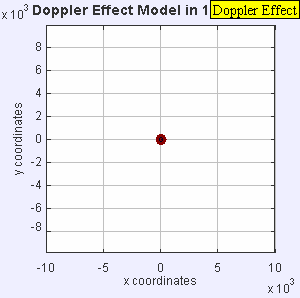Doppler Equation
12PHYS - Wave Systems
Finn Le Sueur
2024
Doppler Equation
\[ \begin{aligned} & f' = f\frac{v_{w}}{v_{w} \pm v_{s}} \end{aligned} \]
- \(v_{w}\): the velocity of the wave in the medium (\(ms^{-1}\))
- \(v_{s}\): the velocity of the source (\(ms^{-1}\))
- \(f\): the actual emitted frequency of the wave produced by the source (\(Hz\))
- \(f'\): the observed frequency of the wave (\(Hz\))
Pātai: What is the \(\pm\) symbol?
- Literally: plus OR minus
- In words: \(v_{w} \pm v_{s}\) means the velocity of the wave relative to the source
- Approaching: \(f' = f\frac{v_{w}}{v_{w} - v_{s}}\)
because the wave and source are moving in the same direction, the
wave appears to be moving slower relative to the source
- Wavefront is compressed, wavelength is shorter, frequency is higher, pitch is higher
- Receding: \(f' = f\frac{v_{w}}{v_{w} + v_{s}}\)
because the wave and source are moving in opposite directions, the
wave appears to be moving faster relative to the source
- Wavefront is expanded, wavelength is longer, frequency is less, pitch is lower
Doppler Skill 1: Calculating \(f'\)
- Activity 6A Q1, Q2
Breaking the Sound Barrier



